
A State With a Stormy History
Anyone who has lived for any period of time to the east of I-35 in Texas has experienced some impacts from a tropical storm or hurricane. Texas lore is indeed filled with major storms that have decimated the towns, cities and ports along the Texas Gulf Coast.
The Great Galveston Hurricane of 1900 remains to this day the deadliest natural disaster in the history of the United States. About 8,000 of Galveston’s population of 30,000 lost their lives in a single day to that storm, whose tidal surge had the entire Island under 8-15 feet of water.
Prior to this storm, the City of Galveston was the largest city in Texas and considered by many to hold the promise of becoming the “New York of the Gulf Coast” as one promoter put it at the time. The devastation from this storm ended all hope of that happy circumstance coming about.
But it also led to the development of the Houston Ship Channel and spurred Houston to become a major refining and shipping hub. Additionally, much of Galveston Island was raised by 8 to 10 feet and resulted in the building of the city’s famous Sea Wall. Galveston is thriving once again, but the impacts of that storm linger to this day.
An even stronger, unnamed storm pounded Houston in 1943 (the National Weather Service did not begin its tradition of assigning names to full-fledged hurricanes until the 1950s), decimating much of that city’s military-building infrastructure and setting back the U.S. war effort as a result. Though packing 132 mph winds, this very compact storm dissipated quickly once it was fully over land.
Hurricane Carla in 1961 was a very different story. While it was over water in the Gulf of Mexico, Carla was at one point a Category 5 storm packing 175 mph winds. It made landfall just north of Corpus Christi, near Port O’Connor, causing a tremendous amount of flooding and wind damage up and down the coast of Texas and cities as far as 50 to 100 miles inland. Carla gradually weakened as it tracked right up the Texas Highway 77 corridor, with its eye passing just east of Waco and directly over Dallas. The subtropical remnants of the storm ultimately passed directly over Chicago before entering Canada and finally dissipating over the Labrador Sea. She was a hard one to kill.
Hurricane Beulah in 1967 came ashore just south of Brownsville and tracked all the way up north of Victoria before turning southwest and moving back over Laredo into Mexico. In the process, this very rainy storm flooded much of South Texas, dumping more than 30 inches of rain on towns like Refugio and Sinton.
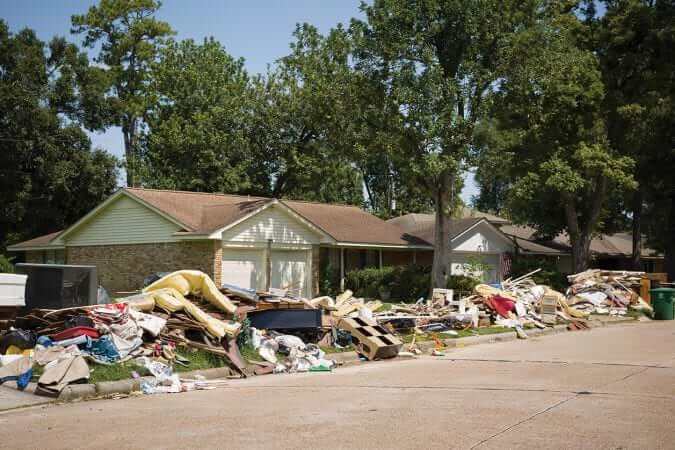
Three years later, Hurricane Celia, with observed wind gusts of up to 180 mph, caused extensive damage when it came ashore over Corpus Christi. All told, the storm killed 29 people and caused $930 million in damage, as measured in 1970 dollars. In dollar terms, Celia would remain the costliest storm in Texas history until 1983. That was the year that Hurricane Alicia came ashore directly over Galveston, moved right up the Houston Ship Channel and caused extensive damage in Houston. In 1983 dollars, the tab for that very mean storm exceeded $3 billion.
Most of Alicia’s damage in Houston was caused by its very high winds. Eighteen years later, Houston would get a hard taste of the other terrible side of storm damage, when Tropical Storm Allison rapidly developed in the Gulf of Mexico just east of Galveston, quickly moved ashore, and then hovered over Texas’s largest city for the better part of three days, dumping more than 40 inches of rain on the city in the process. The flooding that resulted was the most extensive and costly Texas’s largest city had ever experienced. After moving north into East Texas, the storm then reversed course and came right back down over Houston a week later before finally moving off to the east.
No one knew it at the time, but Allison’s odd movement pattern and prodigious, flooding rainfalls would prove to be a preview of an even worse storm to come.
Galveston and Houston were hit again in 2005. Up until the hour before making landfall, it appeared as if Hurricane Rita — which formed in the Gulf of Mexico barely two weeks after Hurricane Katrina had devastated New Orleans and the eastern Gulf Coast — would land directly over Galveston and travel up the I-45 corridor over downtown Houston. City and county officials were so concerned that a full evacuation of Galveston and other low-lying coastal cities was ordered.
Houston and Harris County leaders also ordered a partial evacuation of the county’s and city’s low-lying areas. Unfortunately, about half a million other Houstonians who did not need to evacuate decided to try to get out of town in the 48 hours prior to Rita’s landfall, resulting in the most massive and long-lasting traffic jam in the state’s history. The Texas plan for reverse lane-flow on the state’s Interstate and major state highways came about as a result of this gridlock, which could have become a major human tragedy had Rita remained on its northwestward track with those freeways still filled with cars.
But divine providence or just plain luck intervened, and Rita took a jog to the north at the very last possible moment, sparing both Galveston and Houston the worst of its potential impacts and devastating East Texas and Western Louisiana instead.
And then, three years later, came Ike. Unlike Rita, Ike did not take a last-minute jog to the north, and did not spare Galveston or Houston from anything. Even though its Sea Wall performed its function, Galveston Island experienced its worst flooding since the 1900 storm, as Ike’s backflow brought in waters from Galveston Bay rather than the Gulf of Mexico. Much of Galveston proper was under as much as 8 feet of water, and travelers to the city today will see markers on many of the downtown buildings noting the water’s height that day.
Ike’s winds knocked down trees all over Houston and East Texas, causing extensive power outages and damaging thousands of homes. This writer lived in the Heights neighborhood of Houston at the time and listened as the 100-year-old house directly behind our home was completely destroyed when Ike uprooted a 60-foot-tall oak tree and rammed it into the house’s living room. Ike killed 113 Americans, caused tens of thousands of Texans to be without power for weeks, and resulted in major damage all the way up to Chicago before it finally played itself out a week after passing through Houston.
What all of this long and tragic history tells us is that every storm is its own unique experience. The lessons learned from one or several storms can help to better prepare a city, county or region for the next storm to come — building codes can change, contra-flow lanes established, sea walls and flood control reservoirs built, floodplains redefined and houses in low-lying areas required to be elevated — but every new storm brings more, often unanticipated lessons of its own.
No storm since the Great 1900 Storm brought with it more unanticipated consequences than Hurricane Harvey.
Hurricane Harvey
As so many major hurricanes do, it formed as a tropical wave just off the West coast of Africa, first gaining attention from meteorologists on Aug. 12, 2017. It churned around in the Eastern Atlantic Ocean for five days before it had gained enough steam to become classified as a tropical depression. As it gained circulation the storm’s eastward track began to gain speed, and by Aug. 18, the newly-named Tropical Storm Harvey, now armed with sustained winds of 45 mph, passed over the islands of Barbados and St. Vincent as it entered into the Caribbean Sea.

In Texas, leaders of coastal communities began to take notice and begin preliminary preparations as the storm track models used by the National Weather Service began to project an eventual landfall likely somewhere along the eastern half of the Gulf Coast. Otherwise, things were business as usual and the ordinary citizens in these communities continued to go about their daily lives. Yes, a storm was brewing, but it was, at that point, a distant and still unlikely threat.
After weakening substantially while passing over the Yucatán Peninsula on Aug. 23, Harvey merged with a tropical low-pressure system in the Gulf of Mexico and once again strengthened into a Tropical Storm. A day later, on Aug. 24, Hurricane Harvey was officially born, and all of the computer models were projecting a landfall within a few days somewhere between Corpus Christi and Houston. Harvey was no longer a threat to residents of the Texas Gulf Coast. The storm was now a reality they would all need to prepare for and survive.
Tragically, even some of those who prepared as best they could would not survive. Ultimately, 106 Americans lost their lives to this massive storm, most of them Texans.
Harvey made its initial landfall on the afternoon of Aug. 26, entering Texas just to the east of the small resort town of Rockport. The storm slowly moved inland for about 50 miles, and then stalled out for a couple of days, dropping prodigious amounts of rain on the communities in the region between Rockport and Houston. While most of the news coverage focused on a 100-mile wide swath of Texas from El Campo to Port Arthur — over which Harvey dumped an unprecedented 40-55 inches of rain over a five-day period — communities as far inland as Waco received up to 20 inches of rainfall. It was by far the worst flooding disaster in the state’s history.
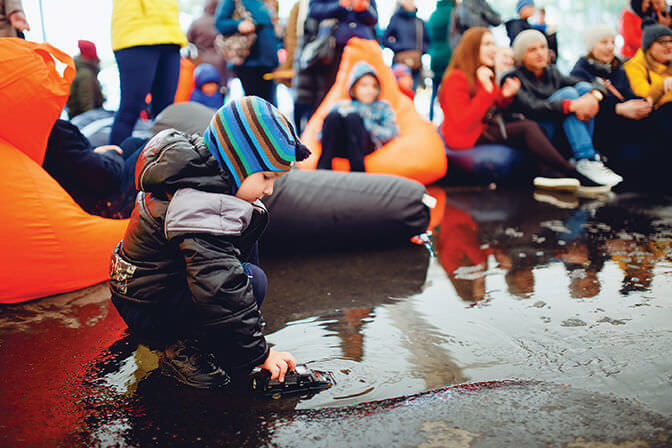
Although on the “dry” side of the storm’s eye, areas as far south as Kingsville and as far west as San Antonio were also majorly impacted by Harvey’s rage. For the oil and gas industry, this meant that the entire 23 county region of South and Central Texas that makes up the Eagle Ford Shale play area was subjected to flooding and wind damage.
By Aug. 28, Harvey had, like Hurricane Beulah and Tropical Storm Allison before it, shifted its course and re-emerged into the Gulf of Mexico. Now assuming a northeastward trajectory, it made its second landfall near the refining port city of Port Arthur two days later. It was during this re-emergence phase that the major rainfall fell on the northeastern portion of the Gulf Coast, in the process flooding out more than 80 percent of the refining capacity from the Houston Ship Channel all the way to the Louisiana border. All told, more than a quarter of the nation’s refining capacity was taken offline for weeks.
Neither Texas nor the country had ever seen anything quite like it. By the time it was done, Harvey had inflicted upward of $125 billion in property damage, rivaling Hurricane Katrina as the costliest natural disaster in American history.
No single industry was more severely impacted by Harvey’s wrath than oil and gas.
Harvey Gives Oil and Gas the Business
In addition to being an intense storm, Harvey was a big storm geographically and forced the shutting in of most of the oil and gas platforms operating in the Gulf of Mexico. Fortunately for the offshore industry, though, the strongest parts of the storm passed to the south of the busiest parts of the Gulf, and as a result did not do the same kind of real damage to oil and gas infrastructure that was inflicted by storms like Katrina and Ike.
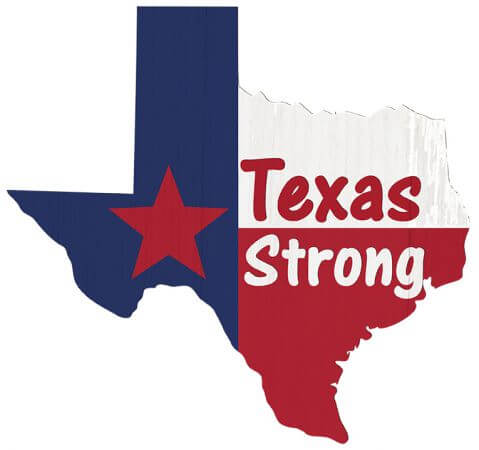 Much of the production from the Eagle Ford Shale was also lost for a time, as operators worked to limit damage and any pollution incidents by shutting in wells and securing other facilities in advance of the storm. While some limited flooding and wind damage did occur in the inland areas of the Eagle Ford region, the main delays in getting production, pipelines and compressor stations back up and running after Harvey’s passage were due to power outages, some of which lingered for days. Taken all together, the production outages in the Gulf of Mexico and onshore Texas meant that about 15 percent of total U.S. production was taken offline for several days.
Much of the production from the Eagle Ford Shale was also lost for a time, as operators worked to limit damage and any pollution incidents by shutting in wells and securing other facilities in advance of the storm. While some limited flooding and wind damage did occur in the inland areas of the Eagle Ford region, the main delays in getting production, pipelines and compressor stations back up and running after Harvey’s passage were due to power outages, some of which lingered for days. Taken all together, the production outages in the Gulf of Mexico and onshore Texas meant that about 15 percent of total U.S. production was taken offline for several days.
Meanwhile, as noted earlier, the refining industry in Corpus Christi to the southwest and from Houston to Port Arthur to the northeast was hit hard. The Texas Gulf Coast is home to more than 30 percent of the nation’s refining capacity, and the great majority had to be shut down during and after the storm’s passage due to flooding and/or power outages.
The refinery shutdowns created a cascading effect of consequences. Pipeline deliveries of crude oil into them had to be curtailed since most of the refineries were unable to accept crude oil inputs until power was restored or the floodwaters had receded. On the output end of the process, the huge Colonial Pipeline that transports gasoline all the way up the East Coast to New England was temporarily shut in for lack of gasoline to fill its line. Other gasoline pipes saw similar impacts throughout September and even into October.
Unsurprisingly, all of these impacts resulted in gasoline shortages not just in Texas, but all along the Gulf Coast and throughout the markets served by the Colonial line. But the refining industry quickly began to regain its footing, with facilities coming back online throughout September, and by the middle of October, the gas shortages had pretty much disappeared.
In the end, the fact that the damage done by Harvey ended up being so quickly resolved by those in the upstream, midstream and downstream sectors ended up being a real testimonial to the oil and gas industry’s amazing resiliency, the safety of its facilities, and its commitment to customer service.
In the meantime, while companies were in the middle of resolving their own operational issues, real people in the communities they serve and reside in needed help, including many of their own employees.
A Humanitarian Disaster of Unimaginable Scope
In its wake, Hurricane Harvey left behind a humanitarian disaster of unimaginable scope. America’s fourth largest city was, put simply, underwater. It wasn’t just the low-lying areas hit by Ike in 2008 — neighborhoods that had never flooded before had flooded during the storm’s passage.
But that wasn’t the end of the story. Later, several neighborhoods thought to be safe on higher ground also flooded, as the U.S. Army Corps of Engineers determined it had to release millions of gallons of water from the city’s Barker and Addicks flood control reservoirs out of fear their dams could collapse. This had simply never happened before.
All told, hundreds of thousands of people had been displaced from their homes. The need for items that Americans take for granted in their daily lives — things like ice, water, blankets, a meal and on and on and on — was gargantuan, creating a need up and down the Texas coast that the state had never before witnessed.
Into this breach stepped thousands of volunteers and charitable organizations who are so excellent at organizing efforts like this. Texans are a generous people, and the nation’s televisions were over the following days and weeks filled with images of Texans, working with an amazing number of volunteers from other states, doing what they do best: Helping others. But the need was vast, and such a vast need requires a vast amount of money.
The oil and gas industry has a long history of stepping up in a big way to help provide relief to those in need after a major natural disaster has taken place. Houston is the nerve center for the nation’s industry, and every company based there had a significant portion of their employee base impacted by Harvey. Any company’s first concern in such a situation is always for the well-being of its employees, but the impacts to the community at large also come into focus in a major way.
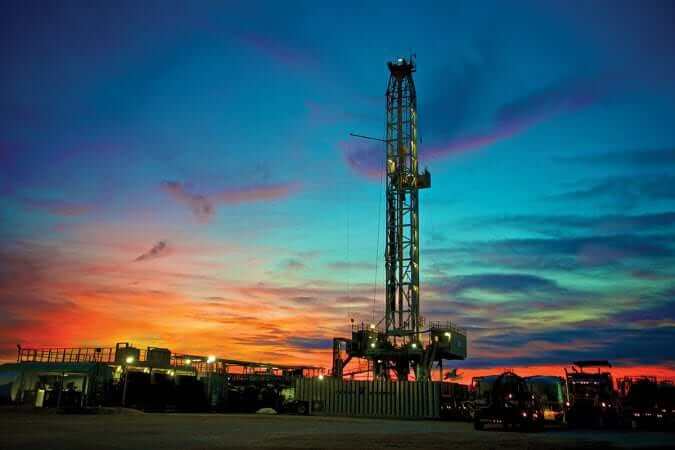 One of the best and quickest ways to help in major relief efforts is to make contributions to groups like the American Red Cross, the United Way and other organizations that play the lead roles in organizing and conducting massive rescue and relief operations. Most of the larger companies have matching gift programs for donations by employees, and many such companies quickly announced they would step up the matching amounts for Harvey-related contributions. Many companies also offered comp time and time off for employees who were able to go out and physically help with the various relief efforts around the city and region.
One of the best and quickest ways to help in major relief efforts is to make contributions to groups like the American Red Cross, the United Way and other organizations that play the lead roles in organizing and conducting massive rescue and relief operations. Most of the larger companies have matching gift programs for donations by employees, and many such companies quickly announced they would step up the matching amounts for Harvey-related contributions. Many companies also offered comp time and time off for employees who were able to go out and physically help with the various relief efforts around the city and region.
In addition to all of those efforts, before the Hurricane had even completely made its way through the city, companies throughout the industry were announcing major additional donations to various organizations:
Aug. 29: Shell announced it would donate $1 million to the American Red Cross.
Aug. 29: ExxonMobil announced contributions of $500 thousand each to the American Red Cross and the United Way.
Aug. 29: BP announced contributions totaling $750 thousand to the Red Cross, the Community Foundation of Greater Houston and the United Way of Greater Houston.
Aug. 28: Chevron announced it would make a $1 million donation to the American Red Cross. Aug. 29: Anadarko Petroleum announced a $1 million donation to the United Way.
Aug. 30: Apache Corporation announced a $250 thousand donation to the American Red Cross.
Aug. 30: Cheniere Energy announced a $1 million donation to the American Red Cross.
The list above is just a small sampling of the hundreds of special donations to Harvey-related relief donations made during that last week of August by companies in the industry. A full listing would consume the space for this entire article and more.
ConocoPhillips — a Company Invested in the Community
In terms of these special corporate contributions, no company stepped up more quickly and in a bigger way than ConocoPhillips. With its corporate headquarters located just off the Katy Freeway in the Energy Corridor area of West Houston, ConocoPhillips employs thousands of Houstonians, a large number of whom were among those impacted by the storm and its aftermath.
Like so many other oil and gas companies, ConocoPhillips’ management and employees are heavily involved in the community in which they live. The company’s website details its support for local organizations like the United Way, the Houston Livestock Show and Rodeo, the Greater Houston Partnership, Rice University and the Boys and Girls Clubs of Greater Houston. The company’s matching program for employee contributions helps to support myriad other local organizations doing good in the community.
But it isn’t just Houston. ConocoPhillips makes sure it gets involved in supporting the needs of every community it serves. An interesting way to illustrate this is to take a look at the websites for the local newspapers in the communities in which the company has operations. One great example is the Karnes Countywide, the newspaper covering Karnes County, which resides in the center of the Eagle Ford Shale region.
Enter “ConocoPhillips” into the website’s search function, and you are presented with a seemingly endless list of articles detailing the company’s myriad contributions to local community organizations:
April 12, 2016: ConocoPhillips awards $191k in grants to Eagle Ford area organizations
April 21, 2011: ConocoPhillips gives $20k to the city of Kenedy
Sept. 26, 2012: ConocoPhillips sponsors local DoveFest
Nov. 19, 2014: ConocoPhillips presents a donation to Kenedy elementary school
March 6, 2014: ConocoPhillips supports Eagle Ford community with $233,000 in grants
That’s just a sampling from the first page of search results. There are several more pages after that. This is a company that invests in these communities.
This is also a company that is heavily-invested in Houston, and when its leaders saw the city in such great need, it stepped up in a big way. On Aug. 30, 2017, Chief Executive Officer Ryan Lance announced that ConocoPhillips would donate $2.5 million to both the American Red Cross and the United Way.
“Our thoughts are with all of those who are dealing with the impact of this unprecedented natural disaster,” Lance said. “Our priority remains ensuring the safety of our employees and our operations. However, as members of a much larger community that needs our help, we stand ready and willing to do our part. We encourage others to follow.”
The leaders of the two organizations were overwhelmed by the company’s generosity.
“The Red Cross works around the clock in extremely challenging conditions to respond to disasters like Hurricane Harvey,” said Gail McGovern, President and Chief Executive Officer at the American Red Cross.
“We couldn’t do it without the generosity of our amazing donors — like ConocoPhillips. With their support, the Red Cross can enable communities to prepare for the unexpected, and when disaster strikes, to respond with shelter, food and the necessary supplies to ensure people are cared for and to help during the recovery process. We are extremely grateful for their support.”
“We are deeply touched by the magnitude of caring and generosity of ConocoPhillips and its employees whose support will help United Way provide assistance to the thousands of individuals and families across our region that have been impacted by this unprecedented disaster,” said Anna Babin, President and Chief Executive Officer of United Way of Greater Houston.
All of this happened despite the fact that the company’s headquarters had been rendered inaccessible by the floodwaters, a situation that ended up lingering for two full weeks. And it wasn’t just the company’s headquarters that was impacted — many of the company’s employees were also hit hard by the terrible storm.
“Ensuring the safety of our employees”
As Lance said when announcing his company’s massive contributions, ensuring the safety of the employees is one of the highest priorities at his company. After Hurricane Harvey hit Houston, accomplishing this became a very big job.
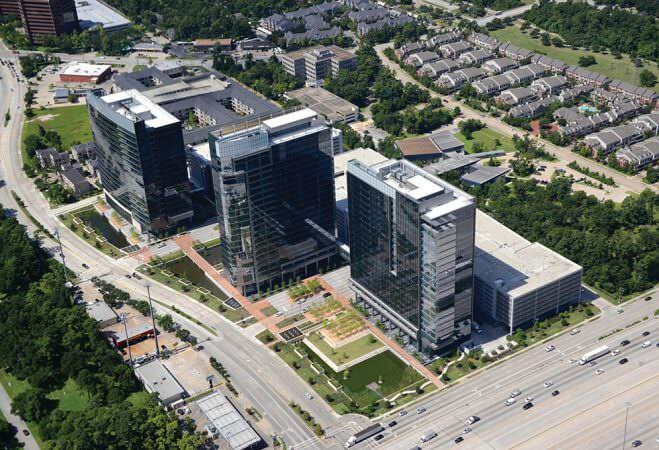 Almost 20 percent of the company’s Houston-based employees were temporarily displaced from their homes by the storm. This is not surprising to anyone who knows the geography of Houston. Both the Barker and Addicks reservoirs straddle the Katy Freeway just west of the Energy Corridor and the neighborhoods that surround it. Those neighborhoods — where many employees choose to live to avoid long commutes to and from work — were among those impacted by the Corps of Engineers’ decision to release the massive amounts of water from those reservoirs.
Almost 20 percent of the company’s Houston-based employees were temporarily displaced from their homes by the storm. This is not surprising to anyone who knows the geography of Houston. Both the Barker and Addicks reservoirs straddle the Katy Freeway just west of the Energy Corridor and the neighborhoods that surround it. Those neighborhoods — where many employees choose to live to avoid long commutes to and from work — were among those impacted by the Corps of Engineers’ decision to release the massive amounts of water from those reservoirs.
Thus, even while its headquarters was under water, the company found itself with an employee crisis on its hands. Luckily, a big piece of the company’s culture is to encourage its people to take initiative, and even while having to work from remote locations, that’s exactly what many of them did.
The company’s website discusses some of the first steps that were taken to facilitate assistance to impacted employees:
Human Resources launched an employee hotline so employees could register their storm status and supervisors could get updates on their teams. The Corporate Communications team followed by establishing the Hurricane Harvey Employee Resource Site to provide relevant information and resources. Employees and contractors also received notifications about the event from the Global Alert System.
As the disaster unfolded, the company activated its Disaster Assistance Loan Program and Natural Disaster Cash Assistance Program, providing qualified employees with financial support to help them and their families recover from Harvey’s impacts.
“We knew employees and retirees had been impacted and were willing to help,” said Heather Sirdashney, the company’s Human Resources General mManager. “The question was, ‘how can we identify the needs, and what’s the best way to get help to those who need it?’”
In all, the company provided short-term housing for more than 150 of its employees and facilitated employee loans for more than 80. And the communications tools set up by the corporate communications team played a major role in helping the company’s people coordinate their efforts.
“I’m just a volunteer.”
The story of one ConocoPhillips employee, Geologist Nick Fryer, illustrates the spirit of volunteerism that prevailed throughout Houston in Harvey’s wake, and how important those efforts would become to so many.
Fryer and his wife, Christine, were one of the families who owned a home in one of the neighborhoods near the Energy Corridor. Like so many others in that area, their home escaped the initial flooding caused by the storm’s passage, and by the end of the day on Sunday, Aug. 27, they had thought they would escape the worst.
But the next day was the day that the Corps of Engineers made the decision to begin releasing water from the Barker and Addicks reservoirs, and the Fryer home, situated as it was near the confluence of the two reservoir spillways, soon became among the first to be flooded by that event. By 9 a.m. that Monday morning, Nick and Christine were scrambling to protect as much of their possessions and furniture as they could, as the floodwaters had already risen to ankle level.
“We thought we could raise things enough to avoid the flooding,” Fryer said. “It quickly became evident that wasn’t going to cut it.” They soon realized it was time to get themselves to safety. As luck would have it, they were able to flag down a man in a red inflatable boat who had been ferrying people out of the neighborhood to safety that morning.
When they asked him if he lived in the neighborhood, the man replied “No, I live in the Heights. Since I had a boat, I wanted to help. I’m just a volunteer.” Texans helping Texans.
Two weeks later, when the waters had finally subsided from their neighborhood, the Fryers found themselves once again benefiting from this spirit of volunteerism, this time from Nick’s fellow ConocoPhillips employees. A group of them showed up at his home one day to help Nick and Christine in the cleanup efforts and immediately began ripping out soaked sheetrock and carrying furniture and other water-damaged items out onto the front lawn.
“I couldn’t believe it,” Fryer said. “They ripped out the floors and took the walls down to the studs, all in one day. Then they started drying out the house with fans and dehumidifiers.”
The Fryers’ story is just one of many examples of this kind of “people helping others” theme that arose in the storm’s wake. And ConocoPhillips is but one company in a community of so many oil and gas companies whose management teams and employees stepped up to the plate and contributed so greatly to the relief and recovery efforts in the neighborhoods and communities in which they live.
Oil and gas companies spend a great deal of time and effort training their employees on things like teamwork, leadership, safety and how best to respond whenever a crisis arises. For ConocoPhillips and its employees, their experience and response during and after Hurricane Harvey demonstrate how all of that training truly paid off in one of the most severe crises Texas has ever seen.
About the author: David Blackmon is the Editor of SHALE Oil & Gas Business Magazine. He previously spent 37 years in the oil and natural gas industry in a variety of roles — the last 22 years engaging in public policy issues at the state and national levels. Contact David Blackmon at [email protected].
karenroach/bigstock.com, Felremae/bigstock.com, Goodmoments/bigstock.com, RoschetzkyPhotographyBigStock/bigstock.com, Parilov/bigstock.com, Photo courtesy of conocophillips














